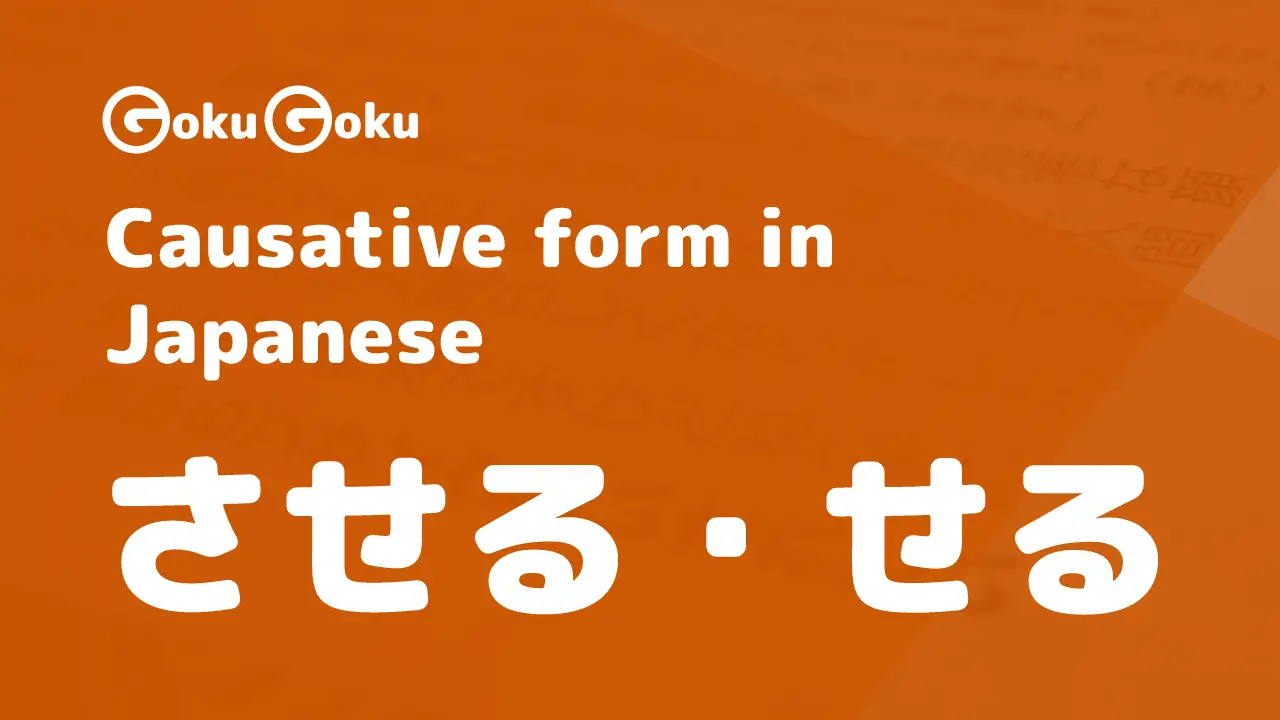Complete introduction to Japanese Adjectives
Anna Baffa Volpe
Get in touch with meAdjectives in Japanese are another building block of a Japanese sentence, together with verbs, particles, and nouns.
Adjectives in Japanese are special, as they behave as if they were verbs. In fact, we are talking about "conjugation" of the adjective.
We generally divide adjectives into two categories:
- Adjectives in "i" (い)
- Adjectives in "na" (な)
In this post we are going to introduce adjectives in Japanese. We will learn the 2 categories of adjectives and see their various uses and forms.
Adjectives in "i" (い)
Adjectives in "i" end in "i" or "ii":
- 美くしい (
beautiful) - 高い (
high) - 近い (
close)
---
This category is called in Japanese 形容詞, a term that means:
- 形容 means
description,qualification,modification - 詞 indicates the
particle
Adjectives in "na" (な)
The other category is represented by adjectives ending with "na". This category is called in Japanese 形容動詞:
- 形容 means
description,qualification,modification - 動詞 indicates the
verb
---
Because of this, we can also call them as “adjectival verbs”.
Below we can see some examples of both い-adjectives and な-adjectives:
How to use adjectives in Japanese
We recall a characteristic of the Japanese language: the absence of gender and number for the noun and therefore all the elements attributed to it.
This feature is also reflected in the adjectives. For example, the adjective 高い (takai) is translated both as is tall and are tall.
However, there are also adjectives referring preferably to the female gender and others to the male gender.
For example 美しい (utsukushii) and 綺麗な (kirei) are both used to say that a person is good-looking, referring to women.
When we instead want to say that a man is handsome we use for example ハンサム (handsome from the English language).
Adjectives with attributive and predicative functions
Adjectives in Japanese have 2 primary functions:
- Attributive function
- Predicative function
Let's see more in the details how the various adjectives are used in the attributive and predicative functions.
Attribute function
In the Attributive function the adjective is used with a noun and the rule is that it always precedes the noun it refers to:
高い建物
A tall building
好きな歌手
Favorite singer
美味しいお茶
A good tea
上手な選手
A good athlete
美しい絵画
A nice picture
稀な現象な
A rare phenomenon
面白い小説
An interesting novel
親切な方
A kind person
温かいご飯
Hot rice
静かな場所
A quiet place
Predicative function
The predicative use of the adjective instead requires to attach either:
- The predicate
- The verb
- The copula, represented by the verbs だ (
da) and です (desu), that both meanto be
At the same time the ending "na" is omitted:
The adjectives in "i" or "ii" are not accompanied by the copula (だ / です) but contains in itself the verb. For this reason, this category of adjectives behave as verbs in their base form
Note that in the polite form instead the verb です (desu) is added also for adjectives in "i" and "ii"
Adjectives with the suffix なる
There is a series of adjectives in Japanese that uses the suffix なる. Compared to adjectives in い and な, we have fewer opportunities to find this form, but it is used in various cases and it is useful to know it. These are adjectives in い or in な that have a second form in なる.
- 偉大な adjective which means
grand,distinguished,imposing,magisterialand refers to great personalities and also to gods
偉大なる神
Majestic God
- 美味しい is an adjective in い which means
good,exquisite,deliciousand has its variant in な 美味な which becomes 美味なる
美味なる食事
a delicious meal
As you can see, the adjective uses the same kanji 美味 and has two different readings: oishii and bimi na
美 the
Beautyas in 美術 Fine Arts味
flavor,taste厳かな
solemn,majestic,austere,great厳かなる儀式
a solemn ceremony
the suffix なる if placed at end of the sentence becomes なり
偉大なる神 → 神は偉大なり
厳かなる儀式 → 儀式は厳かなり
Examples of adjectives
Let's see some examples with adjectives in the attributive and predicative form:
本を読んだ。
I read a book.
面白い本を読んだ。
I read an interesting book. (Attributive)
In this first example we see the use of the attributive form. In fact, the adjective 面白い (interesting) is placed before the noun it refers to (本, book).
We can see that 面白い (interesting) is an attribute of 本 (book), which specifies something more about the book, which in this case is the fact that it is interesting.
Also note how 面白い is placed before the noun without the copula だ (da) or です (desu).
日本は素敵な国だ。
Japan is a beautiful country. (Predicative)
In this second example we see a use of the predicative form of the adjective. In fact, we see the presence of the copula だ at the end of the sentence. The copula in this case is necessary to specify that the adjective 敵な (beautiful) applies to the noun 国 (country).
Finally, let's see some further examples of adjectives in various forms:
ローマのコロッセオは有名だ。
The Roman Colosseum is famous. (Predicative)
好きな俳優と出会えた。
I met my favorite actor. (Attributive)
美味しいラーメンを食べた。
I ate some good ramen. (Attributive)
That is all for this first introduction to Japanese adjectives.
We learned the 2 categories of adjectives, how to use them, and how to conjugate the attributive and predicative forms.
In the next post we are going to dive deeper into the い-adjectives and な-adjectives.
Thanks for reading.







